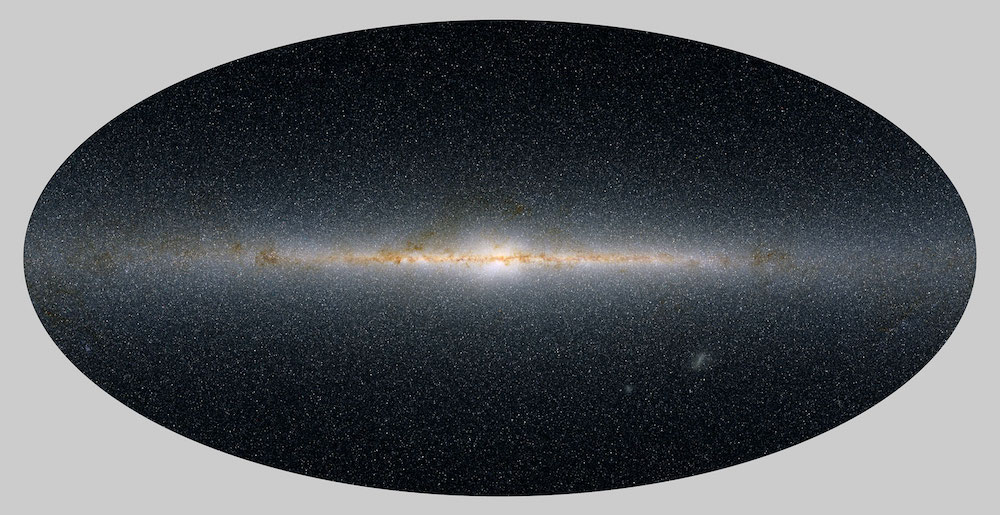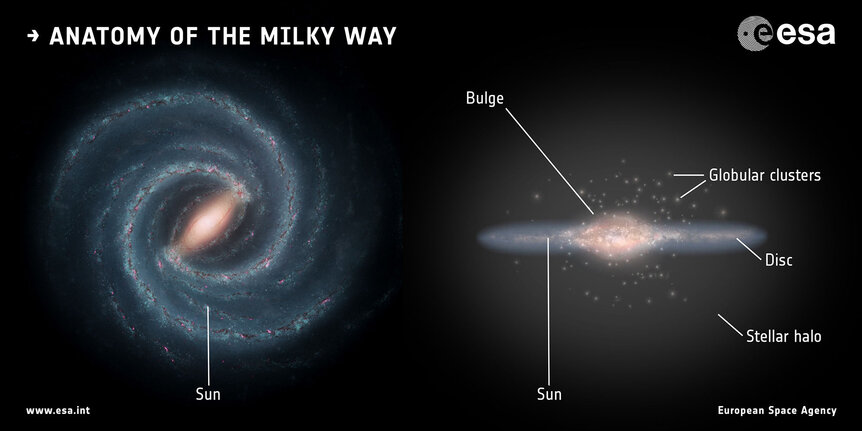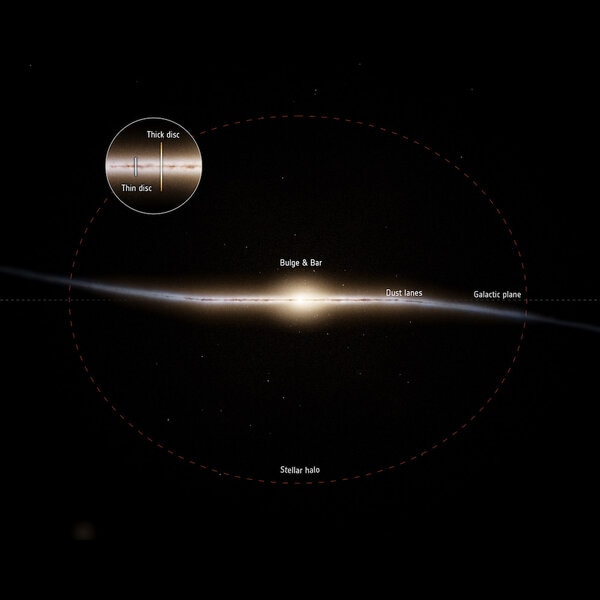Create a free profile to get unlimited access to exclusive videos, sweepstakes, and more!
Timeline of the Milky Way
New work shows a part of our Milky Way galaxy is far older than previously thought.

We live in the Milky Way galaxy, an immense, flat, spiral galaxy surrounded by a massive halo of stars and dark matter. The disk of stars, gas, and dust in which the Sun resides is fully 120,000 light years across; a soul-crushing distance on the human scale. In the middle of the disk is the central bulge, a lozenge-shaped hub of stars.
How did all this structure come together? We know it didn’t all happen at once, but what were the different chapters in the galaxy’s life? What is the timeline of the Milky Way?
This has been the subject of intense research for decades, but new tools are now online that help target specific structures and stars, aiding in understanding how the galaxy came to be the way it is today. In newly published research, a pair of astronomers has tackled this problem and discovered something surprising: One part of the Milky Way is much older than previously thought, changing how we think our cosmic home was constructed [link to paper].
The key observations were made using two facilities. One was the ESA’s Gaia satellite, an astronomical observatory that looks at well over a billion stars (!!) to determine the brightness, distance, position, colors, and motion of each. The other is LAMOST, the Large sky Area Multi-Object fibre Spectroscopic Telescope, a Chinese observatory that takes spectra of stars and can obtain their chemical composition. That last part is critical: When the Universe was young it had almost no heavy elements like calcium and iron in it; those were created in massive stars later, which then exploded and seeded newly forming stars with those elements. Measuring the composition of a star can then be used to determine its age by comparing it to well-tested physical models of how stars evolve over time.
But that’s not easy. Internal processes of a star can make it hard to get the age, and introduce a lot of uncertainty. So the astronomers in the new work targeted stars called subgiants: Ones that are just starting to run out of hydrogen in their cores to fuse into helium. This is a relatively brief phase in a star’s life, and helps narrow down the age uncertainty considerably.
They looked at a staggering quarter million subgiants in the Milky Way disk, and, coupling the ages with the stars’ distances, discovered that the galaxy’s disk is a little more complicated than thought.
We’ve known there are actually two disks: A thin disk that’s embedded inside a thick disk. I wrote about this before:
There are actually two disks to the galaxy: a thick disk and a thin disk, with the thin disk right in the middle of the thick one. Imagine the galaxy is a two-layer cake with frosting in between the layers. The frosting is the thin disk, and the cake sponge is the thick one. If the two sponge layers are exactly the same height, then the galactic midplane would slice horizontally exactly through the center of the frosting layer between them. To give you a sense of scale, if the cake is 10 cm high — the top-to-bottom thickness of the thick disk — then to scale with the Milky Way the cake itself would be a circle 5 meters in diameter [Note: We now know the disk is wider than when I first wrote this, so it would really be more like 6 meters across]! That's a very wide, flat cake. The frosting layer in the middle representing the thin disk would be about 4 cm thick, which is a thick frosting layer! Also, to this scale, the Sun would be 1.3 meters out from the center, roughly halfway from the center to the edge.
The thin disk is very roughly 1,000 light-years top-to-bottom, and the thick disk a little more than twice that. The thick disk contains older stars in general, and the thin disk younger ones. It’s been thought for some time that the thick disk formed roughly 11 billion years ago, a bit less than 3 billion years after the Big Bang.
The new research shows, however, that the thick disk is much older than that: It started forming 13 billion years ago, less than a billion years after the Big Bang. That’s astonishing! It means that the huge cloud of hydrogen and helium that collapsed to form our galaxy got its act together very rapidly, becoming a coherent structure quickly. The work also shows the process of star formation continued for 6 billion years, a long time.
Another very cool thing they found is that the age of the disk correlated strongly with the amount of heavy elements in it everywhere they look in the disk, indicting the gas used to make stars was mixed pretty well during that time. That in turn implies the gas was very turbulent — turbulence is a very efficient way to mix a fluid up — such that the heavier elements created in massive stars and sent back into space when they went supernova was evenly distributed throughout the disk.
This work, if it proves to hold up, gives us a new timeline of the Milky Way. The thick disk started forming immediately, peaking around 11 billion years ago. This is also the same time a massive galaxy, called — seriously — the Gaia-Enceladus Sausage, collided with our Milky Way, contributing a lot of gas and star to both the disk and the Milky Way’s halo. This clearly triggered a lot of star formation in the thick disk.
After this the disk settled down, collisions of gas clouds in the disk caused them to fall closer to the galactic midplane — an imaginary horizontal line cutting the Milky Way in two that defines galactic north and south, a bit like the Earth’s equator — forming the thin disk. This material then underwent star formation, the second episode in the galaxy’s stellar birth history. The Sun formed from this material in the thin disk, very close to the galactic midplane, and which we now know is something like 55 light-years to the north of that line.
So while all this may seem a bit esoteric and technical, remember that what we’re trying to figure out here is nothing less than how we came to be. The Sun formed in the aftermath of that galactic collision, which affected the thick disk and in part created the thin disk — the same material that formed the planets, the Earth, and you. Me. Everyone and everything you see around you.
You may think of astronomy as things going on over your head, but your head itself owes its existence to what’s up there. One of the major goals of astronomy is to figure out how.





























